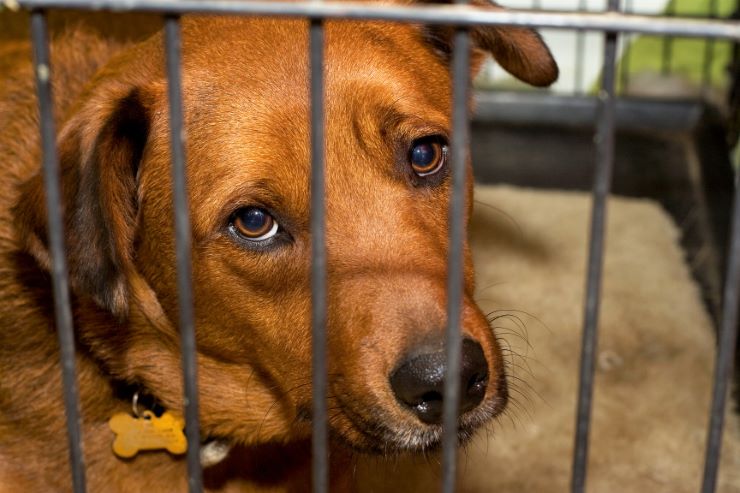Dog crating may seem inhumane to many owners, but the actual reason behind crate training is to help dog owners to get a well-behaved dog and to provide it with a safe space. It is neither cruel nor unfair, provided your puppy or dog has sufficient exercise and an opportunity to eliminate before it is crated.
Crate training is usually associated with housebreaking the new puppies because it helps to teach them to have bladder and bowel control. Besides, many vets and dog trainers recommend dog crating for your pet’s own safety. It’s a good method to confine your dog while you are away from home.
It’s also essential if you are taking your pet on a flight, or if your dog needs to stay overnight at the vet. Crate training will reduce stress-related problems in your rescued dog, and give your older dog some quiet time if you bring home a new energetic puppy.

Photo Credit: skippytpe/Flickr CC
Crate Training works well as a diverse training tool because it is based on the natural behavior of dogs. Like their wild ancestors, dogs desire a safe den. If crate training is done correctly, the dog recognizes the crate as its den and enjoys spending time there.
Crate training should start as soon as you bring your new puppy home. Crating your puppy simplifies the housetraining process for your new pup that is usually quite happy to pee and poop all over your house. Older dogs that have never been in a crate before can become very uneasy when you put them in one.
The crate training process takes time, effort, and patience which depend on your dog’s age, temperament, and past experiences. You should finally teach your dog to go to its crate on command and stay there comfortably until released by command.
For your dog the training process consists of entering the crate, entering the crate on cue when the door is opened, having the door closed behind it, and being inside for extended periods of time. To make crate training successful, always associate the crate with a positive thing. Start by feeding your pet in its crate. Leave the crate in an area your puppy likes to play or sleep. Keep the crate door open and let the dog explore the crate at will to find the encounter pleasant.
Crate training is proceeding much better if you are in the same room with your puppy and not leaving it alone. It will go easier if you keep to a regular schedule of food, water, and toilet trips outside. In the beginning, feed your dog close to its crate.
You may also like:
- Do They Make Crates for Great Danes?
- Why Does My Dog Poop in Her Kennel?
- How do I Stop a Dog from Pooping in its Crate?
A milepost in crate training is leaving your pup in the crate overnight. The crate is usually put in your bedroom, and the puppy sleeps in the crate. Once it is familiar with his crate training schedule, you will not have to be as consistent. It may be a good idea to leave the house for a short time to ensure your puppy is getting accustomed to being crated alone. But don’t place food and water inside the crate because the puppy might knock them over and make a mess.
Dealing with a crying puppy is usually the main problem a crate training owner will face. Get yourself a good set of earplugs and remember that you shouldn’t respond to every barking. At first, a puppy might be a little upset, but they commonly adjust quickly and begin to love their crate. The most important thing to remember is not to associate crating as punishment.
Crate training is not an excuse for you to ignore your dog for hours. When crating your dog, it is important to quickly remove your pet from the crate after returning home and to take it outside. Crate training doesn't replace any of the other things your dog needs and is dissimilar to restricting the dog to a specific spot in the house. It should not be abused, otherwise, the consequences can be disastrous for your dog's psyche.
Crate training is not without its potential pitfalls. The problems usually arise because dog owners fail to teach their pets to like the crate, and leave untrained dogs confined for too long. It also can be a confusing issue for dog owners, adopting a rescue or shelter dog. In any case, you should not blame the dog and should try to recover from your own mistakes.
Leave a Reply